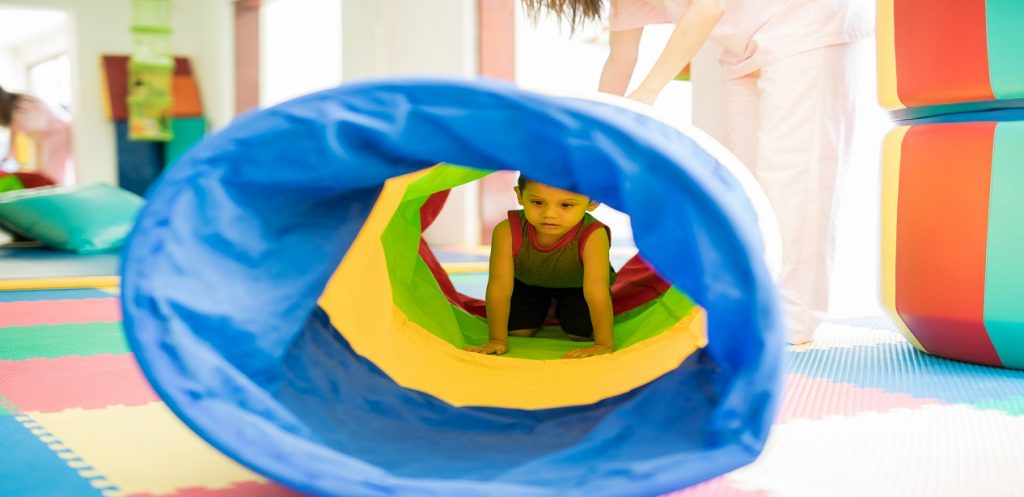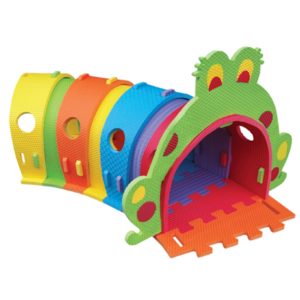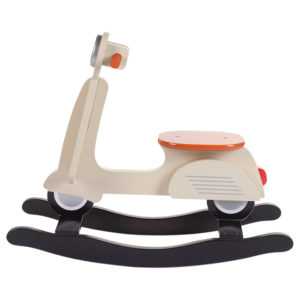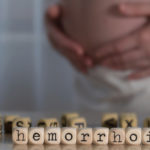Psychomotor therapy aims to support and aid an individual’s personal development. It is based on a global view of human beings that considers each individual as a unity of physical, emotional and cognitive actualities. Which interact with each other and the surrounding social environment.
Psychomotor specialists study the body and its expressiveness. The body is regarded not merely as a mechanism with neurophysiological developments. But also as a thing with deep-rooted emotional traits. Which have come about through motor, sensory and emotional experiences, particularly in early-childhood.
A child will benefit from psychomotor therapy intervention if they present with any of the following:
- – Early Psychomotor development delay (for infants).
- – Motor difficulties (gross/fine motor skills).
- – Lack of body awareness (bumps into or trips over things) related also to ADHD and Psychomotor instability.
- – Unusually high or low activity level, (always active or difficulties with attending).
- – Unusual fear of movement/heights.
- – Excessive craving of rough play and/or lack of safety awareness.
- – Unusual play habits and skills or messy play.
- – Unusual avoidance of touch or eye contact.
- – Lack of hand preference.
- – Poor handwriting/slow written output.
- – Difficulty with self-care activities including: brushing teeth, combing hair, buttoning a shirt, tying shoes, using utensils such as a spoon or fork.
- – Delays in speech (children who have delays in speech often demonstrate Psychomotor difficulties affecting their motor coordination and their cognitive skills).
- – Difficulties with cognitive tasks such as following instructions, problem solving and visual organization.
- – Delay with drawing skills, copying shapes or letters.
- – Lack of knowledge in space and time concepts.
- – Short attention span.
PMT focuses on:
- – Gross and fine motor skills.
- – Lateral dominance.
- – Sensory processing.
- – Cognitive abilities: visual attention, visual memory, planning and problem solving, visual analysis.
- – Space and time concepts.
- – Hand writing skills.
- – Emotional history affecting activity level, behavior, interaction and cognitive skills (visual attention, memory, planning and problem solving, visual analysis).
- – Muscle tone regulation.
Therapeutic Equipment
PMT and OT also use the same equipment for early intervention and childhood Therapy. PMT rely importantly on mirrors as a mediator of communication and motor feedback. We also rely on play therapy and drama techniques to support patients dealing with Psychological conflicts and traumas. Affecting directly their Psychomotor skills (motor and cognitive).
However, technical intervention may differ greatly with Cerebral Palsy’s patients and OT adaptable equipment’s have proven to be even more efficient than PMT. Both PMT and OT professions aim to develop motor skills in action. But PMT focuses more on cognitive analysis and development through play skills. Which adds to its efficiency with children presenting with dyslexia and dyspraxia.









mumzworld.com
mumzworld.com
mumzworld.com
best mumzworld.com
best mumzworld.com
best mumzworld.com
mumzworld.com
best mumzworld.com
best mumzworld.com
best mumzworld.com
best mumzworld.com
best mumzworld.com
best mumzworld.com
best mumzworld.com
best mumzworld.com
best mumzworld.com
mumzworld.com
mumzworld.com
What is Psychomotor Therapy? Most Mums Don’t Know! – Mumzworld
What is Psychomotor Therapy? Most Mums Don’t Know! – Mumzworld
What is Psychomotor Therapy? Most Mums Don’t Know! – Mumzworld
What is Psychomotor Therapy? Most Mums Don’t Know! – Mumzworld
What is Psychomotor Therapy? Most Mums Don’t Know! – Mumzworld
What is Psychomotor Therapy? Most Mums Don’t Know! – Mumzworld
What is Psychomotor Therapy? Most Mums Don’t Know! – Mumzworld
What is Psychomotor Therapy? Most Mums Don’t Know! – Mumzworld
What is Psychomotor Therapy? Most Mums Don’t Know! – Mumzworld
What is Psychomotor Therapy? Most Mums Don’t Know! – Mumzworld
What is Psychomotor Therapy? Most Mums Don’t Know! – Mumzworld
What is Psychomotor Therapy? Most Mums Don’t Know! – Mumzworld
What is Psychomotor Therapy? Most Mums Don’t Know! – Mumzworld
What is Psychomotor Therapy? Most Mums Don’t Know! – Mumzworld
What is Psychomotor Therapy? Most Mums Don’t Know! – Mumzworld
What is Psychomotor Therapy? Most Mums Don’t Know! – Mumzworld
What is Psychomotor Therapy? Most Mums Don’t Know! – Mumzworld
mumzworld.com
mumzworld.com
Aleida Boulton
Bonny Fenbury
Abraham Spark
Dear mumzworld.com owner, Thanks for the well-researched post!
Julieta De Bernales
Lino Eather
Brianna Whitmire
Janna Capehart
Breanna Aleman
Tony Delany
Margery Flemming
Jeff Gower
Moshe Fugate
Landon Gaby
Alejandro Beaufort
Michale Coburn
Krystle Lehner
Elias Hutcherson
Angeles Constance
Nikole Malloy
Orval Sirmans
Shad Bowlin
Salvador Skipper
Aaliyah Bouie
Dani Alison
Lorene Houtman
Alethea Dobbins
Salvador Rico
Teri Nava
Jorg Kenyon
Joan Schaefer
Dear mumzworld.com owner, Your posts are always interesting.
Dear mumzworld.com webmaster, Thanks for sharing your thoughts!
Hi mumzworld.com owner, Thanks for the well-researched and well-written post!
Toni Brousseau
Rubin Rendall
Tyrone Lansell
Erika Dryer
Hunter Mccracken
Trena Kramer
Vida Heney
Dorine Doe
Regina Noggle
To the mumzworld.com webmaster, Excellent work!
Hello mumzworld.com webmaster, Your posts are always informative and well-explained.
Celina Rae
Luann Bozeman
Billy Steen
Kira Harris
Williemae Fielding
Millard Treadway
Leo Warden
Greg Croll
Stefan Ancher
Isabella Fitzhardinge
Adalberto Hildreth
Wilhemina McGovern
Maple McKellar
Kaley Yoder
mumzworld.com
mumzworld.com
Josefa Quirk
Meagan Officer
Tristan Messner
Awesome post! Join the fun at https://osw-4whatsapp.com WhatsApp 网页版的文件共享功能,支持多种格式,满足不同需求。 . Date: 2025-11-27 11:57:30 (-03).